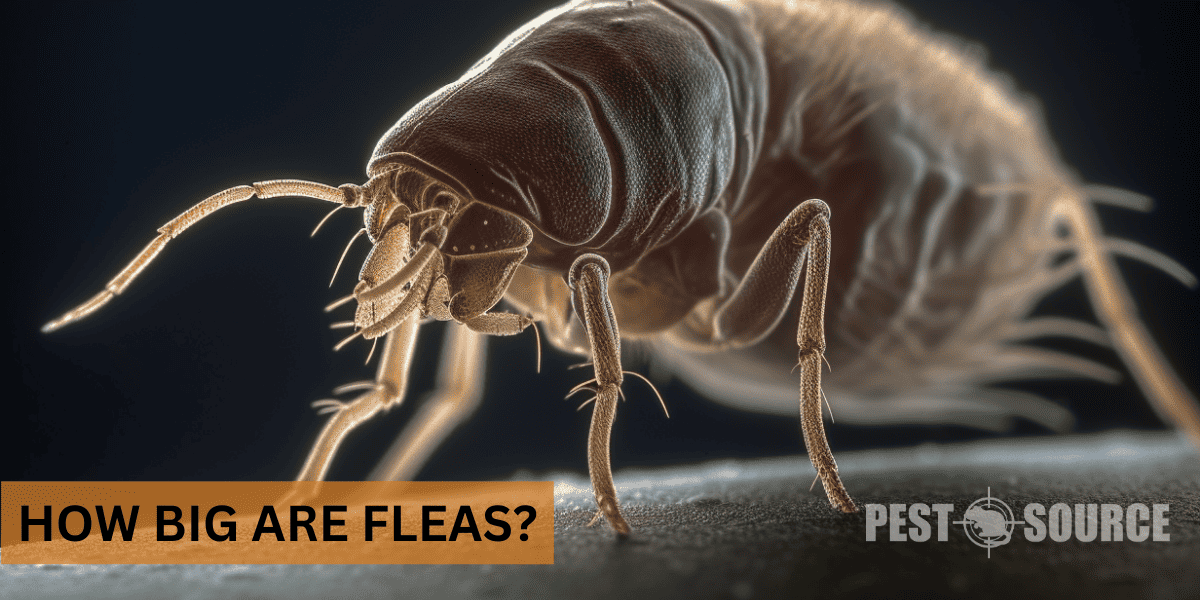Fleas are tiny, parasitic insects infamous for their ability to infest homes and pets, causing a multitude of problems for both animals and humans. With thousands of species, these creatures can be challenging to identify and control.
This comprehensive guide will help you understand the various aspects of fleas, such as their general size, anatomy, and characteristics, as well as provide insights into how flea size may differ among species, life stages, and hosts. Armed with this knowledge, you will be better prepared to identify, control, and prevent flea infestations.
Understanding Fleas: A Basic Introduction
What are fleas?
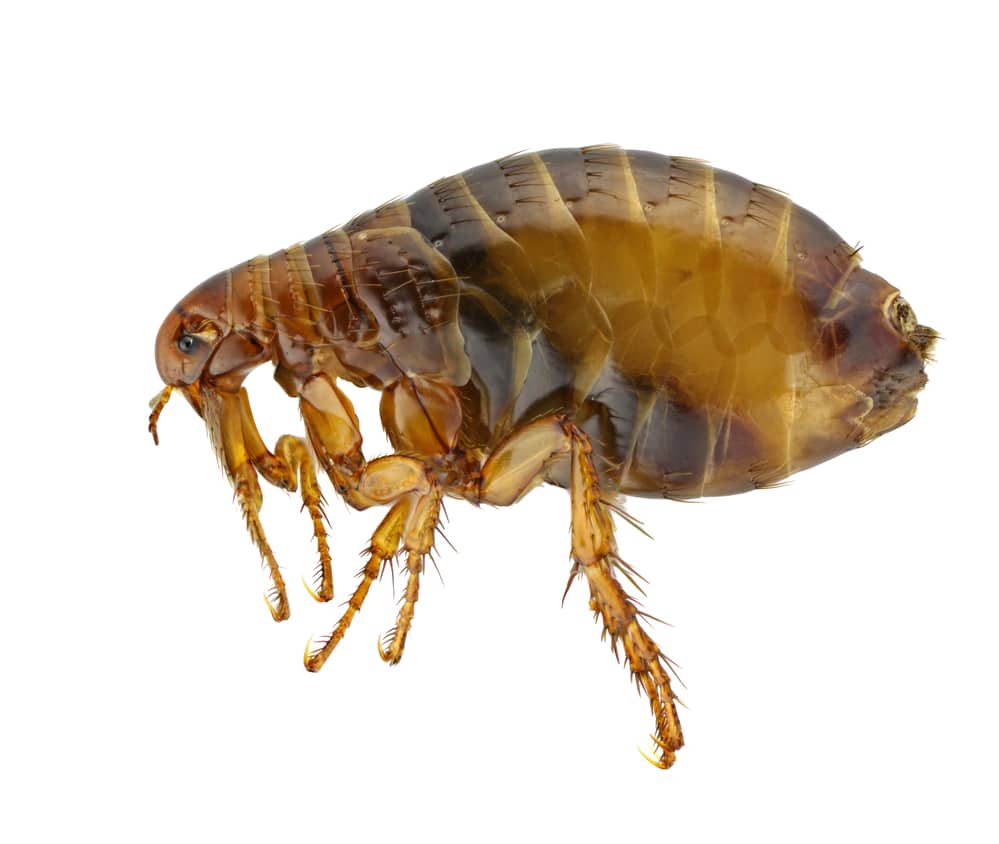
Fleas are a common concern for pet owners and those looking to maintain a pest-free home. Below are key facts about fleas that provide a basic introduction to understanding these tiny, yet troublesome parasites:
- Definition: Fleas are small, wingless parasitic insects that feed on the blood of mammals and birds.
- Jumping Ability: They are known for their incredible jumping abilities, enabling them to move easily between hosts and evade extermination efforts.
- Skin Irritations: Fleas can cause skin irritations and allergic reactions in both animals and humans.
- Disease Transmission: They are capable of transmitting several diseases to their hosts.
- Visibility: Although fleas can be seen with the human eye, their small size and dark color make them difficult to spot without close inspection.
- Coloration: Fleas are typically dark brown to black, aiding their camouflage on hosts and in the environment.
Is a flea an insect?
Yes, a flea is an insect. It belongs to the order Siphonaptera, which comprises around 2,500 known species of small, flightless insects. They have a highly specialized body structure adapted for their parasitic lifestyle.
How many legs do fleas have?
Fleas have six legs, similar to other insects. They use their third pair of legs, which are notably large and powerful, to make their remarkable jumps. This pair is also equipped with claws, allowing fleas to grasp onto their host’s fur or feathers.
Are fleas black or brown?
Fleas are typically dark brown to black in color. This helps them to camouflage effectively on their hosts and in their surrounding environments.
Can fleas be seen with the human eye?
Fleas can be seen with the human eye, but their extremely small size makes them difficult to spot. They are more likely to be noticed when they are in motion, for example, when they jump from one location to another.
Insights into Flea Size: The General Parameters
How big are fleas?
Understanding the size of fleas is crucial for identifying and managing these pests effectively. The table below provides a detailed look at the general size parameters of fleas, including the range of sizes from eggs to fully grown adults, offering a clear perspective on how tiny these creatures can be.
| Life Stage | Size (Inches) | Size (Millimeters) | Description |
|---|---|---|---|
| Flea Eggs | 1/50 to 1/32 | 0.5 to 0.79 | Smallest size of all stages, hard to see without magnification. |
| Flea Larvae | 1/8 to 3/16 | 3.175 to 4.762 | Larger than eggs but still smaller than adults, legless and semi-transparent. |
| Adult Fleas | 1/16 to 1/8 | 1.5875 to 3.175 | Fully grown size, visible to the naked eye but still small. |
What is the average size of a flea?
The average size of a flea depends on its species and age. However, most adult fleas measure approximately 1/16 to 1/8 of an inch in length.
How small can fleas be?
Flea eggs are even smaller than adult fleas, measuring between 1/50 to 1/32 of an inch. Flea larvae, which hatch from these eggs, vary in size as they grow but are typically smaller than adult fleas.
How big can fleas get?
While most fleas are quite small, some species can grow larger, reaching up to 1/8 of an inch in length. This sizing variation often depends on the type of host and environmental factors, such as humidity and temperature.
How big do fleas get when they are fully grown?
When fully grown, adult fleas typically measure between 1/16 to 1/8 of an inch in length. This size can vary slightly depending on species and environmental factors.
How tiny are fleas and are fleas big enough to see?
Fleas are very tiny insects, but they are still large enough to be seen with the naked eye. However, their minuscule size and dark color make them difficult to spot, so catching sight of them usually requires a careful examination or catching them in motion.
Variations in Flea Size: A Comparative Study
How big are fleas on different hosts?
Fleas can vary in size depending on the host, as different species of fleas are adapted to live on specific animals. However, most fleas found on common household pets, such as dogs and cats, are similar in size.
How big are fleas on dogs?
Dog fleas, known as “Ctenocephalides canis,” can range in size from 1/16 to 1/8 of an inch in length. Their size can be influenced by factors such as age, species, and environmental conditions.
How big are fleas on cats?
Cat fleas, scientifically referred to as “Ctenocephalides felis,” are similar in size to dog fleas, generally measuring between 1/16 and 1/8 of an inch in length.
How big are fleas on humans?
Fleas that bite humans are typically similar to those found on pets—with a size range of 1/16 to 1/8 of an inch. Though fleas don’t infest humans the way they do animals, they may still bite if their primary host is unavailable.
Is there a difference in size between dog fleas and cat fleas?
Dog fleas and cat fleas are fairly similar in size, with both measuring between 1/16 and 1/8 of an inch in length. However, dog fleas tend to be slightly more rounded and have thicker bodies, while cat fleas appear more elongated.
Do fleas vary in size by species?
Indeed, fleas vary in size by species, as each species is adapted to its specific host. Other factors, such as age and environmental conditions, can also influence the size of a flea.
What are the sizes of fleas at different stages of their life cycle?
How big are flea eggs?
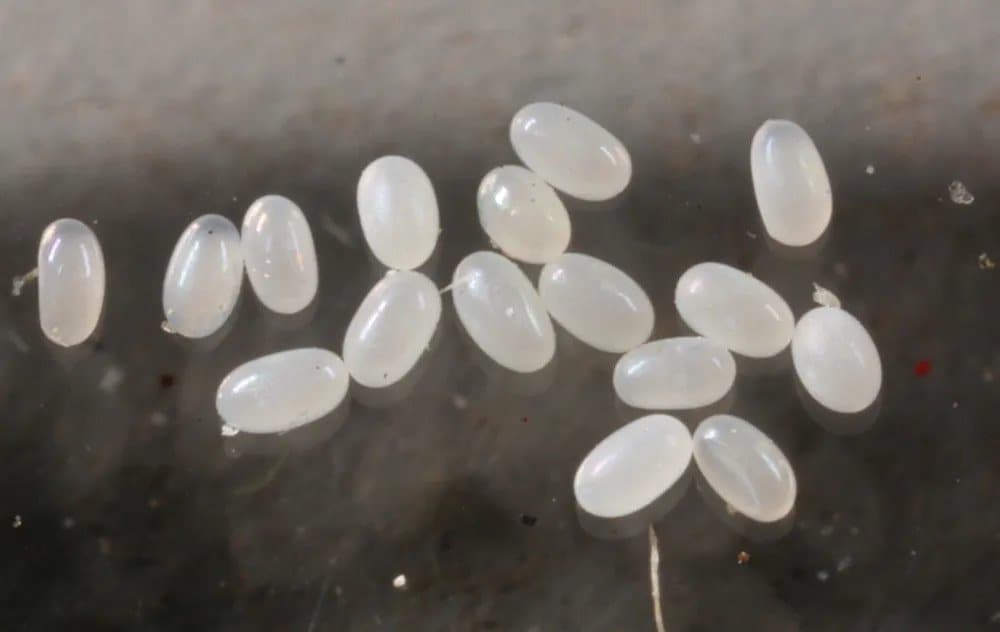
Flea eggs are the smallest stage in the flea life cycle. They measure between 1/50 to 1/32 of an inch in length and are oval-shaped, smooth, and pearly white in color.
How big are flea larvae?
Flea larvae measure between 1/8 to 3/16 of an inch in length. They are legless, semi-transparent, and white, with a worm-like appearance.
How big are adult fleas?
Adult fleas measure between 1/16 to 1/8 of an inch in length. Their bodies are flattened from side to side and covered in hair-like bristles, which aid in locomotion and host attachment.
Visual Representations: Fleas at Their Actual Size
What does a flea look like at its actual size?
At their actual size, fleas appear as tiny, dark, oval-shaped insects with long, powerful hind legs. They can be difficult to see and are most easily spotted when moving or jumping.
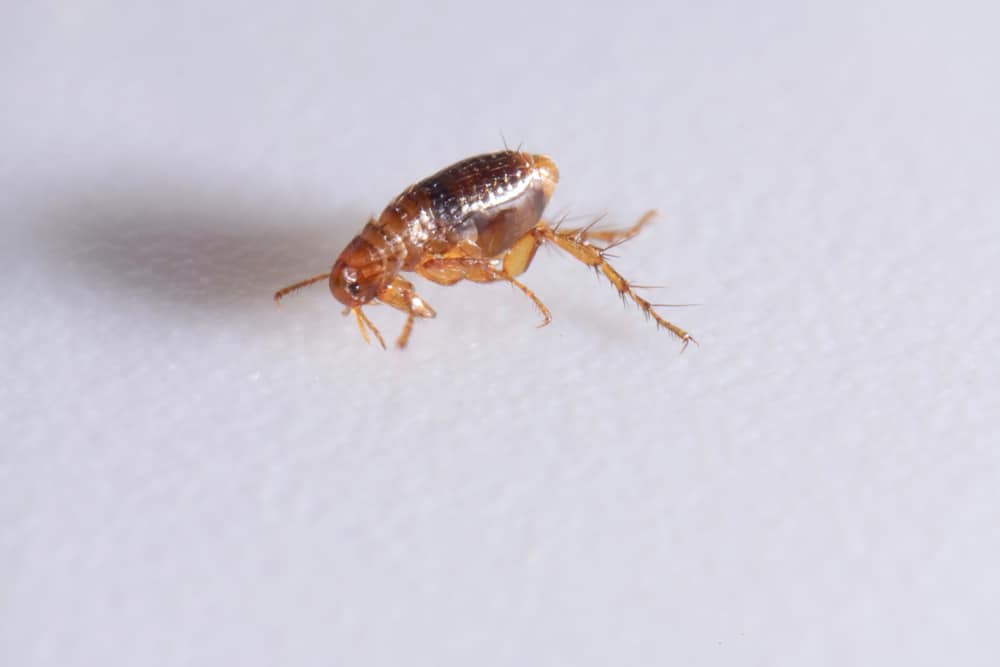
What do flea eggs and larvae look like in real size?
Flea eggs are tiny, oval-shaped, and pearly white, measuring around 1/50 to 1/32 of an inch. Larvae, on the other hand, are white and legless, resembling small worms and measuring between 1/8 to 3/16 of an inch in length.

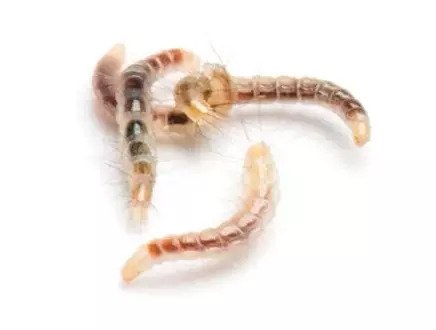
Are there flea size charts or size comparison pictures?
Flea size charts and comparison pictures can be found online or in veterinary textbooks. These charts are useful for visualizing the relative sizes of fleas at different life stages, as well as comparing the sizes of different flea species.
How do fleas appear to the human eye and can fleas be seen with the naked eye?
Fleas can be seen with the naked eye, but their small size and dark color make them difficult to spot. They appear as tiny, dark, oval-shaped specks, which are easier to detect when they jump or move.
Understanding Flea Anatomy and Characteristics
Fleas possess unique anatomical features that are adapted to their parasitic lifestyle, aiding in their survival and ability to infest hosts. Below is a table that highlights key aspects of flea anatomy, including their eyes, antennae, and other notable characteristics, to provide a deeper understanding of these tiny but complex creatures.
| Anatomical Feature | Description | Function |
|---|---|---|
| Eyes | Simple eyes (ocelli) capable of detecting light and darkness. | Primarily used for sensing changes in light, aiding in navigation and avoiding detection. |
| Antennae | Short, segmented antennae located on the head. | Used to detect host odors, temperature fluctuations, and other environmental cues. |
| Legs | Six legs, with the third pair being notably larger and more powerful for jumping. | Enable fleas to jump long distances relative to their size, facilitating host transfer. |
| Claws | Present at the ends of their legs. | Allow fleas to grasp onto the fur or feathers of their host, preventing them from being dislodged. |
Do fleas have eyes and antennae?
Fleas have simple eyes (also called ocelli) that can detect light and darkness, but they do not possess highly developed vision. They have short, segmented antennae on their heads, which they use to detect host odors, temperature, and other environmental cues.
How many legs does a flea have?
As with other insects, fleas have six legs. Their third pair of legs are notably large and powerful, enabling them to jump long distances relative to their size. They also have claws at the ends of their legs for grasping onto their host’s fur or feathers.
How long is a flea?
Fleas typically measure between 1/16 to 1/8 of an inch in length. Their size can differ slightly between species, as well as according to other factors such as age and environmental conditions.
What is the size of flea larvae and pupae?
Flea larvae measure between 1/8 to 3/16 of an inch in length. Pupae, on the other hand, are roughly the same size as adult fleas, measuring between 1/16 to 1/8 of an inch long, and are enclosed in a protective, cocoon-like structure made from silk, debris, and other materials.
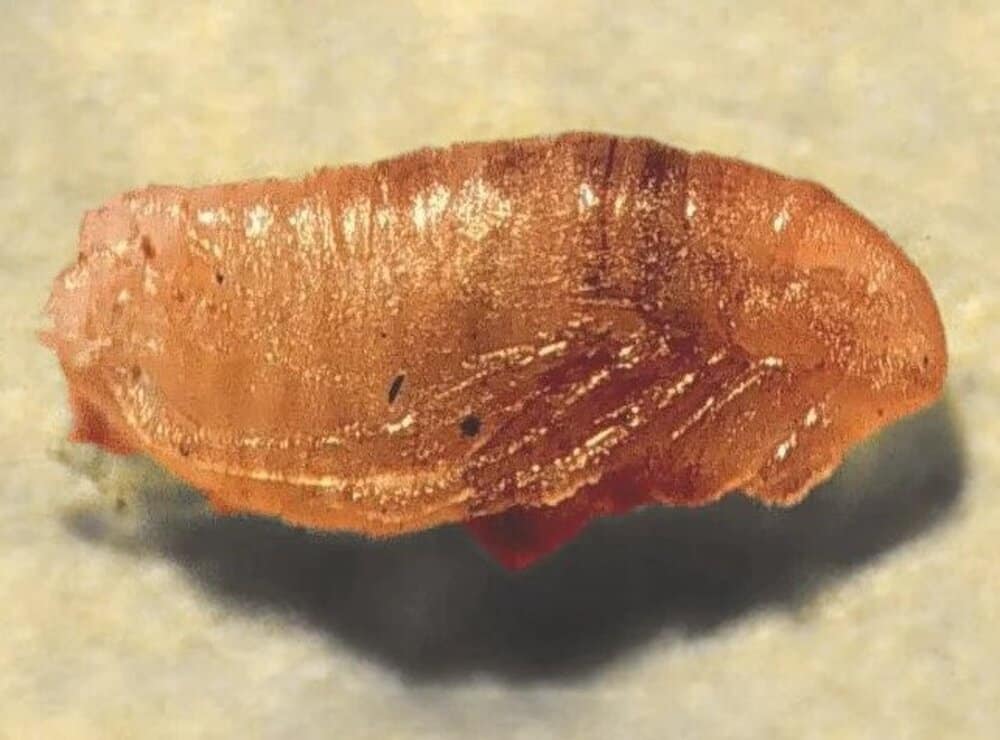
Are black fleas different from brown fleas in size or other characteristics?
The color of a flea can vary between dark brown and black among different species. This variation in color does not necessarily indicate a significant difference in size or characteristics. However, some flea species may exhibit minor differences in size, shape, and behavior depending on their specific hosts and habitats.
Uncommon Flea Size Phenomena and Misconceptions
Are there giant flea-looking bugs and how big can they get?
There are insects that may appear similar to fleas but are much larger in size. One such example is the springtail, which can measure up to 1/4 of an inch long and shares some physical similarities with fleas, such as the ability to jump. It is important to correctly identify these insects, as they do not pose the same health risks as fleas.
How big can flea bites get?
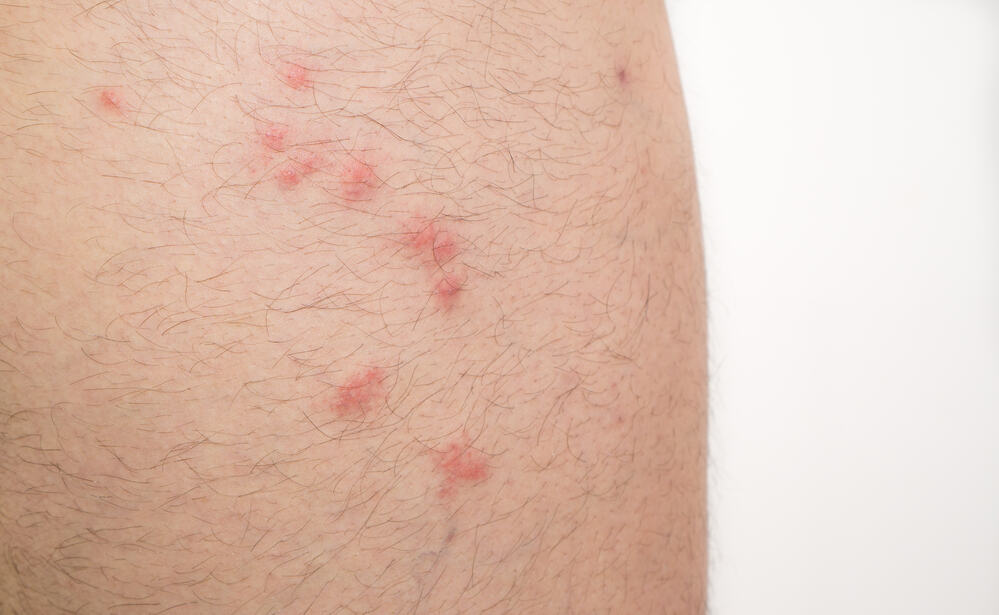
Flea bites can cause red, swollen bumps on the skin that can be quite small (pinhead-sized) or larger (several millimeters in diameter), depending on the individual’s reaction. In some cases, an allergic reaction to flea bites can cause larger, more severe welts and hives.
Can you actually see a flea from far away?
Seeing a flea from far away is very difficult due to its tiny size. They become more visible when closer or when they are in motion, for example, when jumping.
What causes people to report seeing large fleas?
People may mistakenly report seeing large fleas due to the presence of other insects that resemble fleas, such as springtails. Additionally, high-magnification macro images and videos of fleas can create misconceptions about their size.
How to distinguish between actual big fleas and similar-looking bugs?
Careful observation and education can help distinguish between fleas and flea-like insects. Fleas can be identified by their small, oval-shaped bodies, their six legs with powerful hind legs for jumping, and their dark brown to black color. Consulting an entomologist, veterinarian, or flea control professional can aid in accurate identification.
FAQ
Should I be worried if I see a flea?
Yes, finding a flea on your pet or in your home should be a cause for concern, as fleas can transmit diseases and cause various health issues for both animals and humans. It is important to take immediate steps to control and prevent further infestations.
Can you squish a flea?
Adult fleas have tough, resilient exoskeletons that make them difficult to squish by simply pinching them between your fingers. However, they can be killed by using specialized flea control products or by applying sufficient pressure, such as by pressing them against a hard surface.
Is one flea a problem?
Although one flea may not seem like a significant issue, it can quickly lead to a full-blown infestation, as a single female flea can lay hundreds of eggs within her lifetime. Pre-emptive action to control and eliminate fleas is essential in preventing infestations.
Conclusion
Understanding the size and characteristics of fleas is crucial for early identification and effective control measures. Fleas are very small insects, typically measuring between 1/16 to 1/8 of an inch in length, but they can still be seen with the naked eye. They come in various sizes depending on species, age, and host. To protect your pets and home from flea infestations, it is important to educate yourself on flea identification, behavior, and effective prevention methods.

